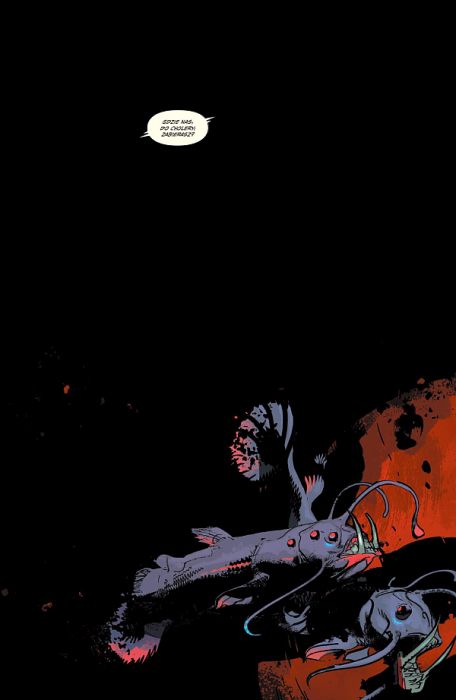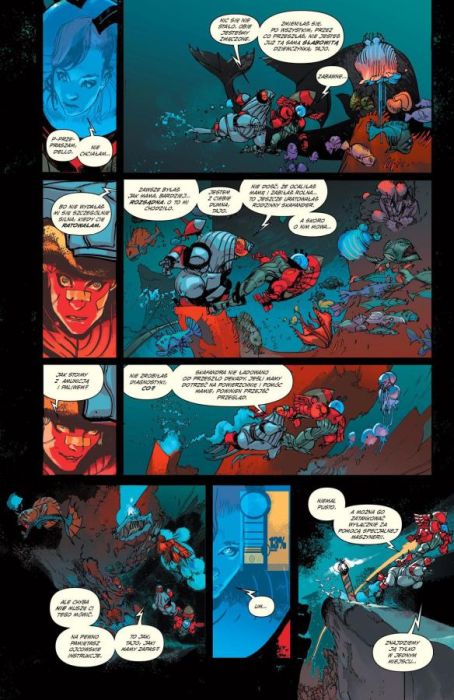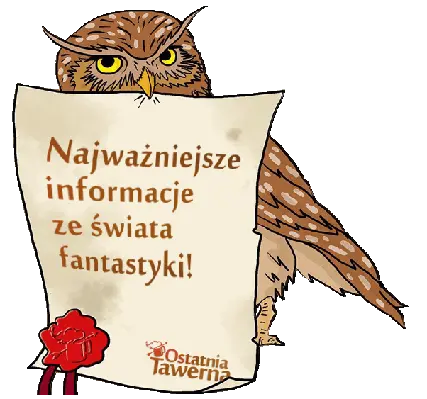Many people argue about what the future of our planet will look like - are we facing droughts, glaciation, or maybe floods? Climate catastrophe, encounter with a great asteroid or aliens? What about our species? Will we become extinct or adapt to new conditions? These difficulties with forecasting make the visions of the end of the (known to us) world so attract the authors of books, films and comics. How does the third volume of the Głębia series fare against this background ?
The first two volumes of Rick Remander’s series had – no need to hide – a lot of flaws, but at the same time intriguing the recipient enough to reach for the next part. It turned out so much that I can confidently say that the Depth is simply uneven: there is too much of something here, not enough there, and this is just the tip of the iceberg.
The end of the (known to us) world
The world we know is over – the Earth is uninhabitable, the murderous Sun burns its surface, forcing people to hide in the only safe place: deep under the oceans, away from murderous rays. Of course, as it usually happens, also this time there is a strong lack of acceptance of such a state of affairs in our society – we want to return to our place, to the surface. To this end, we send probes to help us find a place that will be suitable for living. This time, the goal of people is not to conquer the cosmos and find another planet suitable for life, but to recover what has been taken from them. I must admit that this shows perfectly our species’ lack of humility.
Stele Cain finally manages to rise to the surface, which – as is usually the case in such cases – turns out to be not as barren wasteland as everyone has previously thought. The fact that our species sank to the bottom of the oceans gave others a great opportunity to develop and adapt to the conditions prevailing under the sun’s rays. It can be safely assumed that these extremely dangerous and intelligent animals will probably not only welcome intruders with open paws, but also will not mind giving up their own territory and living with us in peace. It means for the reader that he will have to follow a solid sprawl, because Stel will still be forced to fight for his life. Maybe it is better, because we will be spared philosophizing, for which we simply don’t have time.

Two streams, one mess
In the story presented to us on the comic boards, we can easily distinguish two main streams of the story. One of them concerns Stel Cain, struggling to survive on a surface scorched by the sun’s rays and looking for one of the probes I mentioned, while the other focuses on her two daughters: Tajo and Della, who are trying to help their mother, although the situation between the two is also not appropriate. to the easiest. Actually, I would risk saying that their relations – due to some past events – are strained like a tarpaulin on a cart, requiring time and explanation, otherwise… they threaten to explode.
Such a double threading in itself would not be a bad thing, if it did not result in overloading the plot and notoriously throwing the heroes more logs at their feet. The accumulating adversities make the recipient feel that “too much is unhealthy”, and the creator simply oppresses his heroes. On the other hand, the accumulation of these difficulties means that the philosophical deliberations that were abundant in the previous volumes of the series now occur much less frequently, and thus do not tire the reader. Unfortunately, the comic book characters, whom the reader hardly has a chance to get to know, are lost in the rushing plot, as the characters are rather rudimentary. I have already mentioned that Deep it is an unequal series, but I personally think that the third volume is the best of all those published in Poland so far.

It is not the robe that decorates?
It is a pity, however, that the reviewed part of the series still suffers from the stiffness and stiffness of dialogues, which even Bartek Czartoryski, responsible for the translation of the Coast of the Fading Light , could not be saved . There will be quite a few unnecessarily pathetic phrases and lofty statements that no one would use in an ordinary conversation. This gives an impression of artificiality and makes the whole graphic novel less attractive. The speeches of the “evil” do not help either, who – before dealing a fatal blow – must explain to the victim their motives and the reasons for their hatred towards them, often losing an ideal opportunity for the final victory.
It must be admitted, however, that at least the visual layer of the comic is really high and pleases the eye – saturated colors attract attention, making me associate with Mad Max difficult (perhaps reinforced by the fact that some time ago I refreshed the entire film series). I strongly encourage you to take a look at Greg Tocchini’s drawings, which – although they may seem sloppy at first glance – gain on closer acquaintance, perfectly reflecting not only the specifics of the world, but also perfectly illustrating the emotions tormenting the characters. This is really a strong point of the series!
Summa summarum
The Depth is a bit so that you can see its flaws, the viewer is well aware of its shortcomings and imperfections, and yet ultimately reaches for the next volume. There is something addictive in this cycle that compensates for its shortcomings. This difficult to define factor made me hit the third volume and I will probably give the next installments a chance as well, but it will by no means be a priority title on my shopping list.

